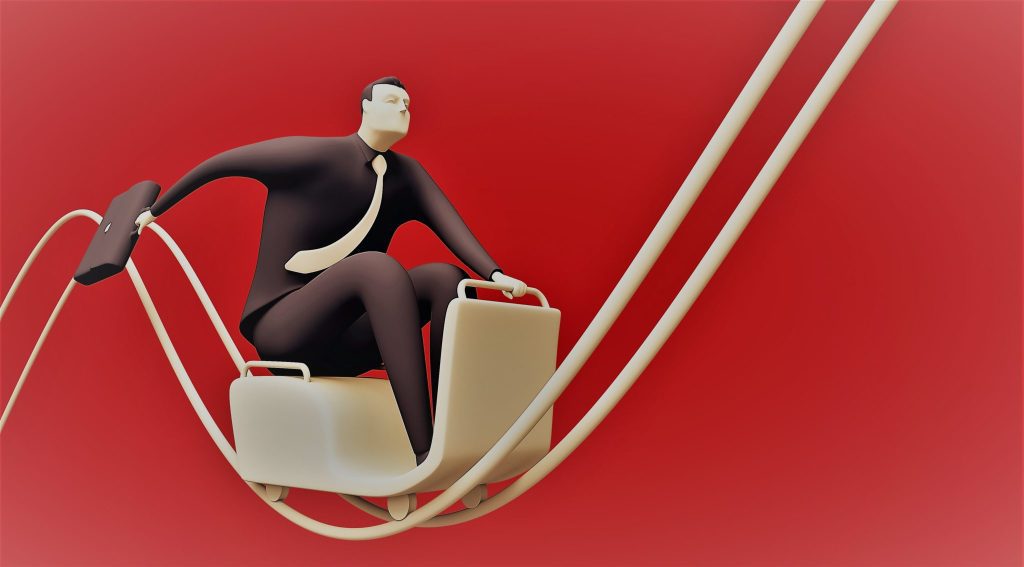Starting a business takes moxy, guts. Business owners can offset the risk of failure with feasibility planning and hard work. But many businesses fail, and our economy must not doom entrepreneurs to complete ruin. The truth is that failure is an inexorable characteristic of business. In a way, the availability of bankruptcy promotes entrepreneurship.
Only one in four companies is still around 15 years after opening day. Entrepreneurs who fail often learn invaluable lessons that allow them to create better ventures. Academics have studied the effects of more and less forgiving bankruptcy laws on entrepreneurship.
In two studies cited below, the authors agree that more relaxed bankruptcy laws promote entrepreneurship. But they disagree on what level of protection should be provided.
How Bankruptcy Promotes Entrepreneurship
In Bankruptcy Law and Entrepreneurship (2008), authors John Armour and Douglas Cumming asses multiple bankruptcy variables, including exemptions, disabilities, and reorganization options, and find a strong correlation between bankruptcy protection levels and rates of self-employment. The authors use data from 15 countries from Europe and North America over 16 years.
Specifically, they find that jurisdictions with strong homestead exemptions have higher levels of entrepreneurship. This is intuitive. If a person isn’t afraid of losing her home in the event that her new business fails, she will be more likely to brave the trials and tribulations of entrepreneurship. In fact, the probability of owning a business increases a full 35% from jurisdictions with the weakest homestead exemptions to those with the strongest. A relatively predictable path to bankruptcy discharge, too, has a positive effect on entrepreneurship.
Armour and Cumming conclude that “more lenient bankruptcy law will, at the margin, stimulate entry by persons with lower levels of optimism to become entrepreneurs.” Moreover, they find, “a more lenient bankruptcy law will permit failed entrepreneurs to re-enter the marketplace [more] quickly.” They also find “no reason for thinking that the quality of their projects will be any less” if bankruptcy laws were more forgiving.
But Do Increased Bankruptcy Protections Promote the Right Kind of Entrepreneurship?
This is where David Primo and William Green, authors of the identically titled Bankruptcy Law and Entrepreneurship (2011) disagree with Armour and Cumming. Primo and Green agree that bankruptcy promotes entrepreneurship. But they find both moral hazard and adverse selection traps in more relaxed bankruptcy laws. Specifically, the authors questioned the quality of ventures approached post-bankruptcy. They found that “[c]ounter to the conventional wisdom . . . more generous laws are linked to lower levels of ‘innovative’ entrepreneurship.”
Moral hazard. According to the authors, because bankruptcy “reduces the costs of an unfortunate outcome and blunts the edge of failure, it may lead individuals to start enterprises that are unlikely to succeed and have little upside potential.” In other words, if bankruptcy is too easy to obtain, too many entrepreneurs will attempt too many businesses doomed to failure from the start.
Adverse selection (or lemon market). The authors argue that creditors will charge higher rates to entrepreneurs with low-risk business models because more entrepreneurs with relatively bad business models will self-select into the market. In turn, the authors note, this “may cause individuals with low-risk projects to drop out of the pool, leaving only those individuals with high-risk proposals.”
So What Level of Bankruptcy Protection is Best?
For entrepreneurs, bankruptcy acts a form of insurance. Bankruptcy insures entrepreneurs against the extreme downside of the inherently risky undertaking of starting a new business.
To the extent that moral hazard exists, I believe that society should err on the side of encouraging new ventures despite the downside risk of failure. And I also believe that innovation in and of itself should not be a barrier to entry. New business owners (by definition, self-selecting) are prone to opportunistic behavior. For entrepreneurs, I think that’s a positive attribute. The initial assessment of a business’s “innovation” may not accurately reflect that business’s likelihood of long-term success.
Individual and institutional investors alike can also overcome any adverse selection problems by offering variable rates based on perceived risk. Investors are better at assessing risk than the authors give them credit. Providers of credit should do their homework prior to investing.
So how much bankruptcy protection is enough to encourage entrepreneurship without incentivizing failure? As Primo and Green find, “bankruptcy laws . . . should encourage entrepreneurial behavior in part by reducing the stigma of failure.” A failed business is one thing. But the prospect of losing one’s home, savings, and personal property is enough to discourage many entrepreneurs from starting a business.
Globalization and technological advances have led to a dramatically shrinking pool of old economy jobs. As a society, we should want to encourage self-employment and make entrepreneurship more attractive. The comparative severity and forgiveness of our bankruptcy code affect how entrepreneurs assess risk. Scholars agree that the availability of bankruptcy promotes entrepreneurship. Where reasonable minds differ, however, it is over the level of protection that should be provided to entrepreneurs.
